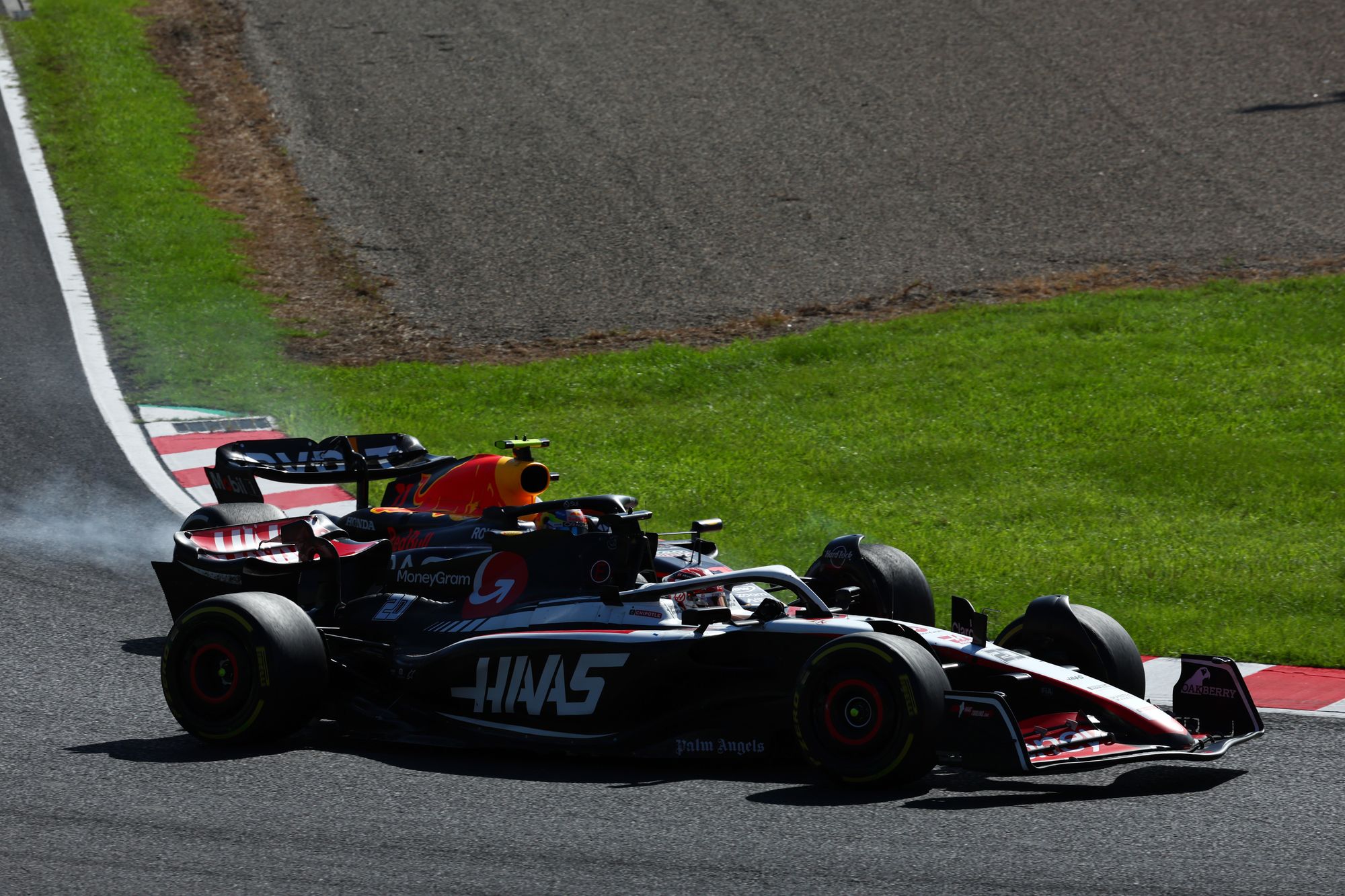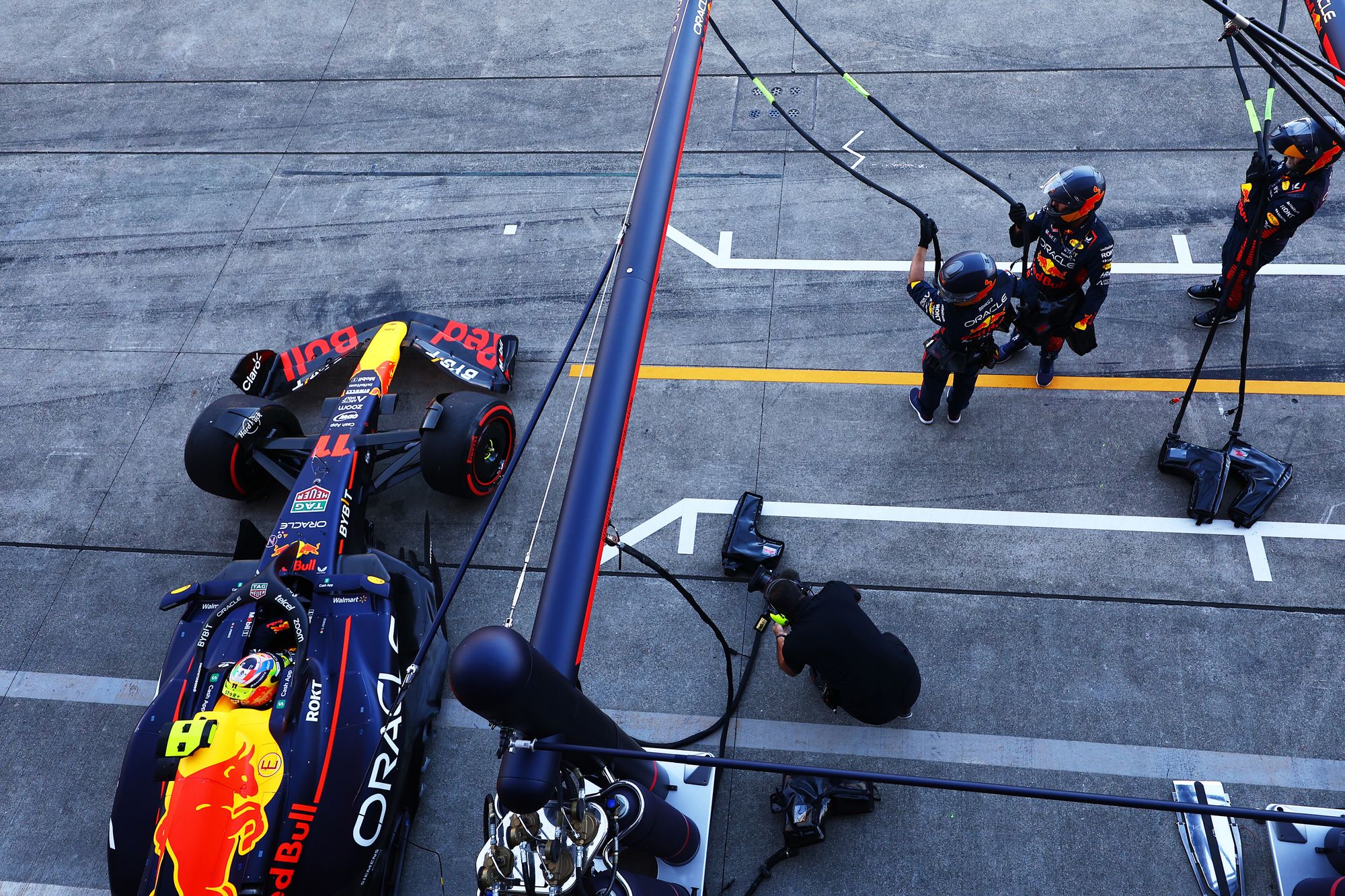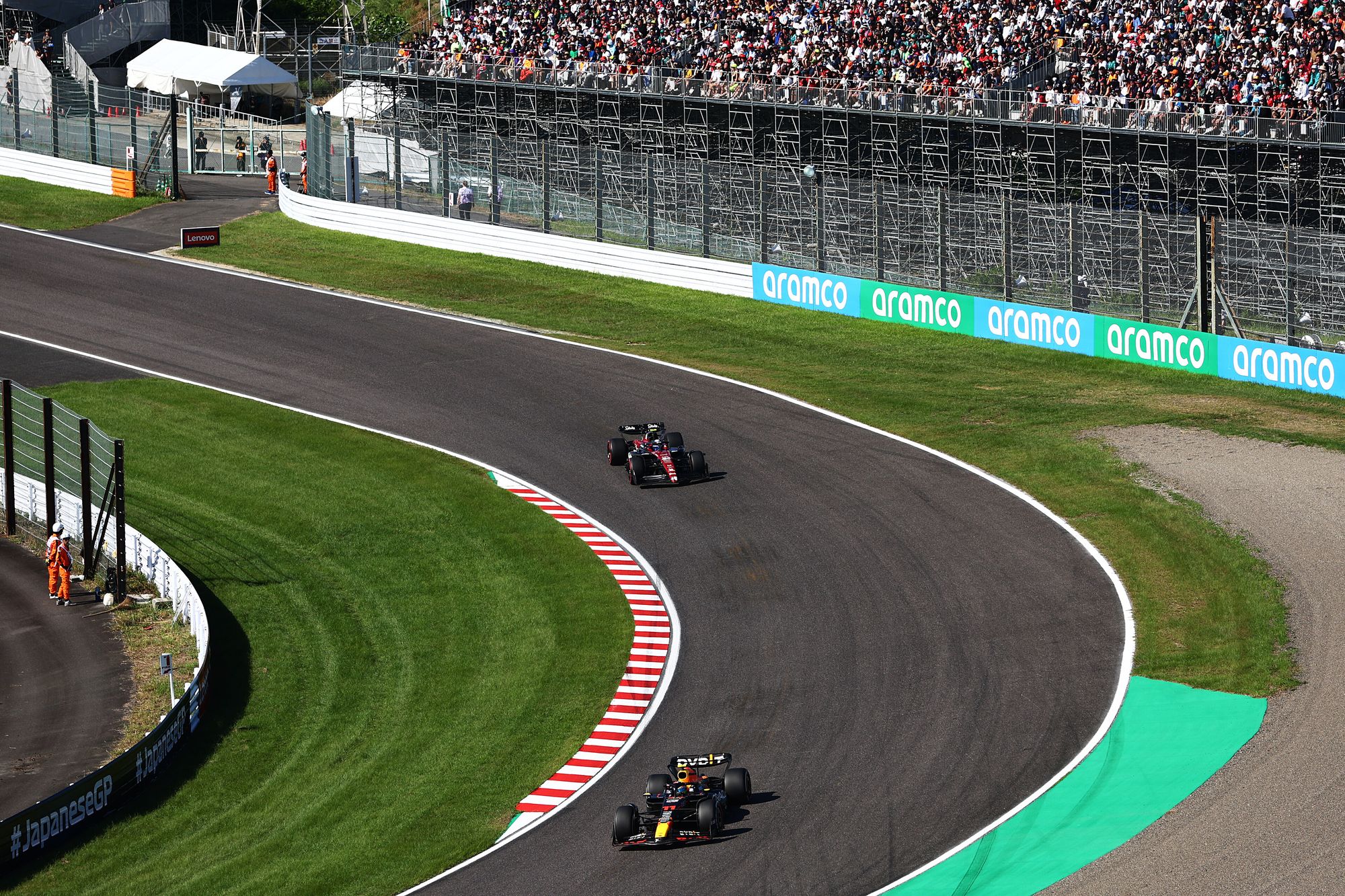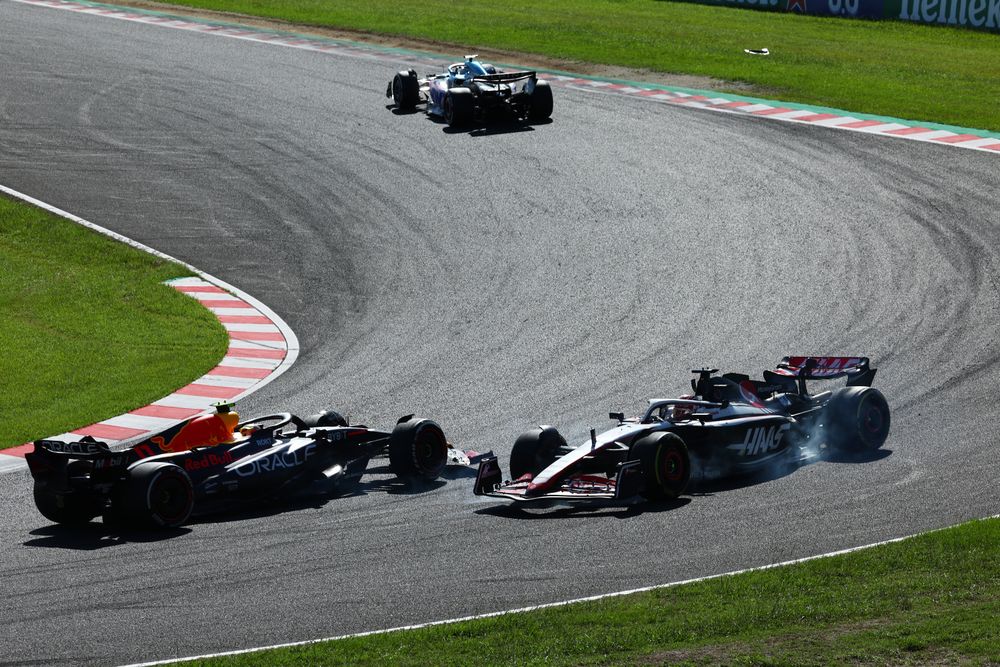Up Next

Sergio Perez's awful Japanese Grand Prix had a bizarre postscript when he was sent back out 26 laps after retiring just so he could serve the 5s penalty he had incurred for hitting Kevin Magnussen.
Perez had retired with damage from the clash before serving that penalty when it was first announced, so Red Bull was taking a precaution in case the stewards exercised their option to turn it into a grid drop for the Qatar GP instead.
Val Khorounzhiy found that whole situation infuriatingly ridiculous:
Sergio Perez's un-retirement in the middle of the Japanese Grand Prix was a particularly laughable example of Formula 1's renowned bureaucratic excesses.
F1's tendency for bureaucracy - whether it be in the often-remarked-upon length of the rulebook or the many technicalities governed by precedent or race director instructions - is an easy target for mockery, but has always been understandable in what is a highly-technical and specialised sport.
But the particular penalty quirk has long been an obvious oddity - one that now has been emphasised on the biggest stage through Red Bull's strategy.
The way F1 penalties work as a general guideline is that they need to be served one way or another. So if a driver has committed a faux pas but stayed in the race to serve the penalty, their slate is wiped clean (save for whatever penalty points are applied), even if they're already running in 20th place two laps down.
But if the faux pas had also led to them retiring on the spot, it potentially becomes a double penalty - because that sanction could then be applied to the next race.

This is why it was very surprising, immediately in the moment, to see Red Bull so swiftly retire Perez's car after his clumsy collision with Kevin Magnussen.
The team knew a five-second penalty had been assessed. Perhaps it thought that through it being already applied - but not served - it would've been rendered immaterial by Perez's retirement, rather than going forward into the next grand prix.
In any case, at some point it clearly became evident that without wiping that Perez sanction off the slate it could - as per the regulations - potentially become a Qatar Grand Prix grid drop, which Red Bull emphatically did not want.
Hence, therefore, the ridiculous sight of Perez being sent out when 26 laps down to do an in-lap, pit to serve the penalty, and do an out-to-in-lap that officially concluded his race.

It is very easy to see how we got there, and actually slightly surprising that it had taken so long for this goofy side of the rulebook/penalty conventions to be highlighted in this way. And it's not clear that there's an immediately obvious better way.
But it sure looked stupid - and it felt wrong.
Imagine if Perez's Magnussen lunge had snapped his front right suspension. It would've been the same offence, with largely the same outcome (Perez's Japanese GP ruined either way, Magnussen's too), but with an extra Qatar GP grid drop tacked on due to a technicality.
A grid drop is a big, big deal in modern F1. Championships can be decided like this.
In any case, it creates a situation where, if a driver's made a mistake, the prevailing consideration is whether or not they've damaged their own car, rather than how bad the offence was or how much the other driver's race is affected.
More than that, it creates a ludicrous incentive system for teams. Perez's car was clearly in a fit state to run when he rejoined - his first 'flying' sector was a personal-best - but the fact remains that a car that had been retired due to damage returned to the track for no good reason.
There are different rules governing this sort of thing that should theoretically prevent complete wrecks returning to the track, but the incentive is there for teams to patch up poorly cars and have them clog up the track to serve penalties.
Is there an easy solution? No. Not necessarily.
But maybe there is something better, and it feels like the FIA - as this isn't an F1-only problem - hasn't really had an impetus to really consider the implications here.
The embarrassing Perez un-retirement should serve as that impetus.
WHAT THE REGULATIONS SAY
Edd Straw

Article 54.3 of the sporting regulations covers what penalties the stewards may impose on any driver involved in an incident. This is the regulation that allows five/10-second penalties, drive-throughs and stop/go.
Section d of this reg contains a provision allowing the stewards to carry over a penalty if a driver cannot serve it in a race.
This states that: "If any of the four (4) penalties above are imposed upon a driver, and that driver is unable to serve the penalty due to retirement from the sprint session or the race, the stewards may impose a grid place penalty on the driver at his next race".
It's important to note that this is an option for the stewards rather than an obligation. Usually these penalties are not carried over, but this is a precautionary measure from Red Bull to ensure it cannot happen.
The regulations don't prevent a car that's been off the track for a long time rejoining the race. The only regulations that touch on that are the distance required to be a classified finisher, which is 90% of the race, plus the capacity to black-and-orange or black flag a car considered to be in an unsafe condition.
However, there was no indication there was any problem with Perez's car as the team had ample time to make any necessary repairs.




